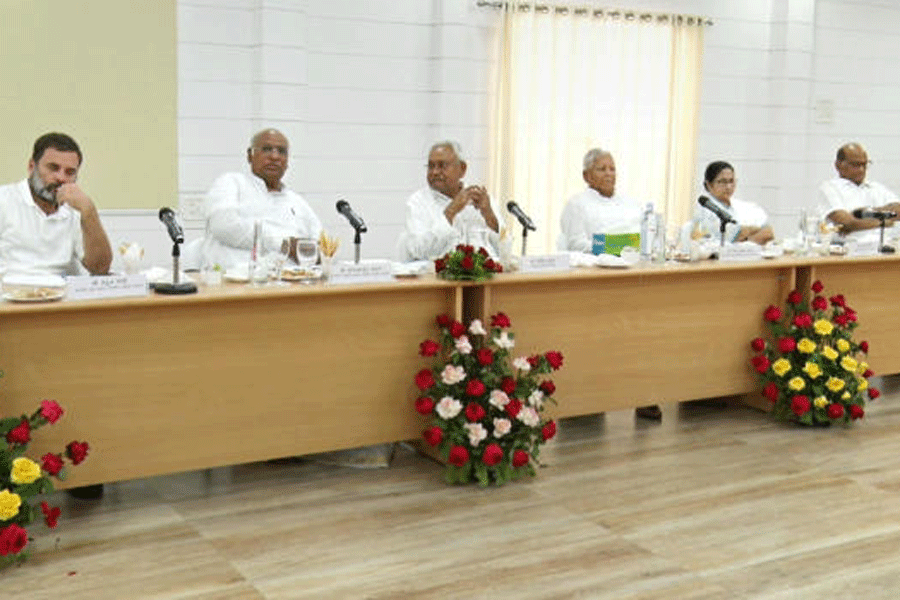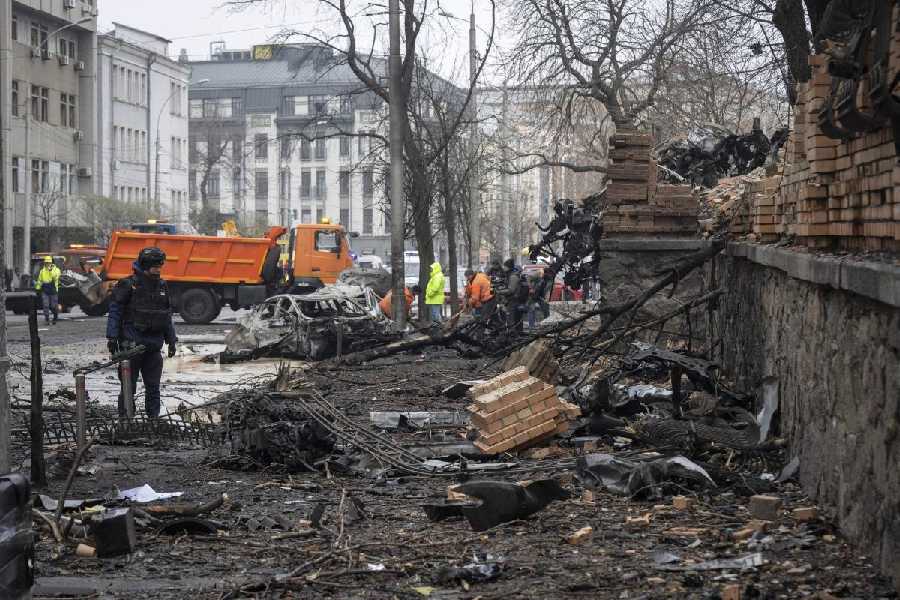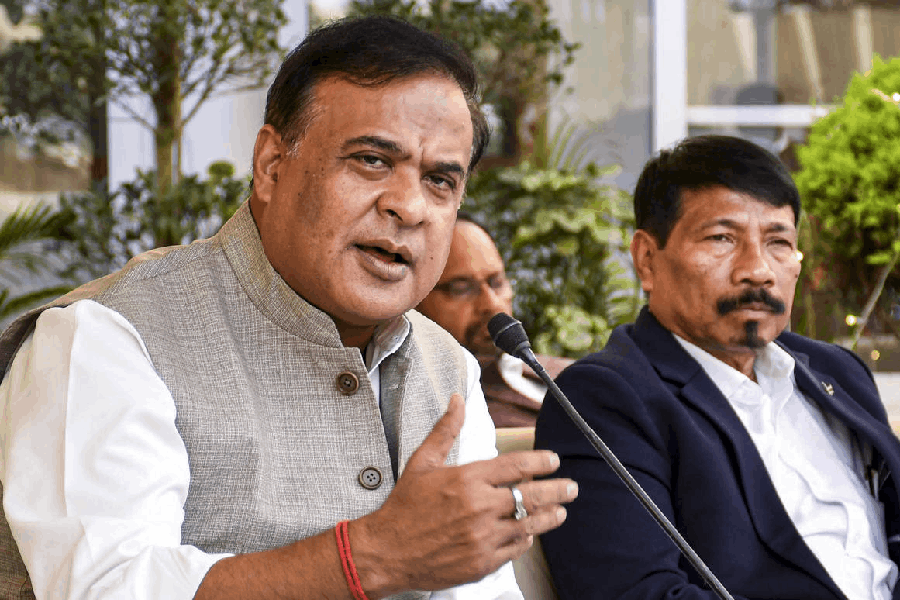The Patna ‘mega-rally’, a political collaboration of almost 20 Opposition parties, is a significant political development. The importance of the event might not be fully appreciated by merely looking at it through the lens of immediate, tangible outcomes. In essence, Patna marks the coming to fruition of a political churning that has been gradually brewing within the Opposition space as a structural response to the Bharatiya Janata Party’s rise to national power in 2014.
Regardless of what transpires in Patna, the lead-up to the meet, as well as the choice of the venue, has already shed useful light on the outlines of an emerging counter-narrative. As mentioned in an earlier article by this writer, the Congress and the Mandal parties of northern India have of late swung close to the framework of Lohiaite progressivism. For instance, the chief of the Samajwadi Party, Akhilesh Yadav, told a media conclave last week that the BJP-led National Democratic Alliance would be defeated in the next elections by the combined forces of the PDA (Pichda, Dalit, Alpsankyakh): backward castes, Dalits and minorities.
The Congress is aligned with the Mandal parties in supporting the conjoined political demands of a caste census as well as reservation for marginalised communities in the private sector. In other words, the electoral agenda of this block of parties encompasses not just quotidian issues of governance but also front-loads the contentious political resolve toward a fundamental reconfiguration of the political economy. Moreover, the venue of the rally, summoning the cultural memories of both the JP movement as well as the Lohiaite legacy (both anti-Establishment movements ranged against the Congress), reflects the Congress’s increasing adoption of a sharp populist style much in line with the Bharat Jodo Yatra. “Rahul Gandhi’s language on political economy is the closest his party’s has been to the [communist] Left’s since 1991,” wrote the senior editor, Shekhar Gupta, recently.
To put it simply, the battle for 2024 increasingly seems to represent a political fight between the Leftpopulism of the Congress-led Opposition block and the Right (or Hindutva) populism of the BJP-led ruling coalition. Or, to borrow from the Israeli political scientist, Dani Filc, between an inclusive populism and an exclusive populism. Filc defines inclusive populism as a kind of anti-Establishment, ‘us versus them’ political mobilisation that seeks to accommodate formerly excluded groups, such as marginalised communities or religious minorities, within a more egalitarian/plebian conception of the people. Exclusive populism is defined as a similar mode of politics, except that it is meant to construct an ethno-nationalist conception of the people through the symbolic exclusion of a demonised group (such as the minorities).
It is hard to find a precedent for this sort of a pronounced ideological clash on a Right-Left conflictual axis in a national election. In the pre-Narendra Modi era of coalition politics (1991-2014), both the Congress and the BJP broadly shared a similar mobilising framework for national elections: a catch-all strategy bolstered by a loosely constituted alliance group characterised by an emphasis on performance/patronage-based legitimacy over an ideologically constituted one. Even in the 2004 national elections, the Congress and the BJP coalitions targeted overlapping political bases of support, revolving around universalist appeals and rooted in differential assessments of government performance.
The Left-populism of the Congress draws many critics who charge it with ceding the governance space of moderate centrism, a historical hallmark of the party. There are some valid arguments to be made in this respect. Yet, the BJP’s nationalist model of domination necessarily entails a corresponding shrinking of the centrist space. The centrist space of Indian politics has traditionally been constituted by the urban middle classes —first, the Nehruvian middle classes and, subsequently, the post-liberalisation middle classes. In the post-1991 coalition era, the centrist space had been preserved by the floating nature of middle-class support. Even as it began to ideologically tilt toward the BJP in the post-Mandal-Masjid era of politics, it never quite represented a stable core support base of the saffron party. For instance, in 2009, CSDS Lokniti surveys indicate that the middle classes backed the Congress over the BJP for its record in governance.
However, since 2014, at a national level, the middle classes have, indeed, fused themselves into the civil society bedrock of a BJP hegemony. In a recent paper, the political scientists, Aseema Sinha and Manisha Priyam, have framed the dominant political discourse as more of a demand-side phenomenon, reflecting the “changing Indian sensibility, especially among India’s professional and middle classes.” It is thus not surprising that the axis of national politics has become somewhat polarised around a populist/Establishment cleavage.
A shift towards inclusive populism might also allow Opposition parties the political space to provide a more robust ideological rebuttal to Hindutva. The philosopher, Ernesto Laclau, wrote that populism could be seen either as a dimension of ideology or as an expression of a particular social class. The Congress has long discursively responded to Hindutva as a systematic ideology and meekly offered a secular alternative. This has proved to be ineffectual because — one, it allows Hindutva to set the terms of the ideological debate; two, it allows the BJP-RSS an opportunity to interrogate and attack the feeble foundations of secularism in the country.
The inclusive populist approach mandates the ideological rebuttal to be framed around Hindutva’s identification as an expression of the core values and interests of a middle-class elite. Alongside, the space of inclusive populism facilitates a coalition of the excluded groups (such as poorer and backward caste segments) who still find themselves on the peripheries of the Hindutva power structure. One might recall that Indira Gandhi had used a variation of this approach — referring to the BJP as a ‘baniya party’ and not as a Hindutva party. As early as 1997, in his book, The Saffron Wave, Thomas Blom Hansen had located the heart of Hindutva “within the large middle class and dominant communities” troubled by the “anxieties of being encroached upon by the Muslims, the plebeians, and the poor.”
Often, the instrumental reason behind the shift of certain social groups towards an omnibus Hindu identity can be under-emphasised. Correspondingly, the role of a hegemonic Hindu public culture can be over-emphasised. For instance, the BJP’s hopes of becoming the second pole of Telangana politics have, until now, depended to a large degree on an expected shift of the dominant community of Reddys from the Congress to the BJP. Therefore, the recent movement of a few key Reddy leaders towards the Congress, signalling the Reddys’ continuing affinity to the Congress, appears to have been enough to dampen the swelling Hindutva wave in the state. The new Reddy enthusiasm towards the Congress, in turn, might have been partly influenced by the perceived stickiness of the traditional Dalit-Muslim support base of the party being bolstered following the Bharat Jodo Yatra in the state.
As the political sociologist, Anthony Giddens, had argued, social actors are not simply shaped passively by dominant political structures but they negotiate with these political structures as knowledgeable and purposive agents with a capacity to act or manoeuvre, according to the given socio-political context. The mind-space of voters is a complex domain, subjected to the push and the pull of overlapping political registers of identities and ideas. The parties that triumph are usually those that manage to make the political registers favourable to them during an election. But it does not necessarily indicate, or require, the discrediting of other political registers.
Asim Ali is a political researcher and columnist










